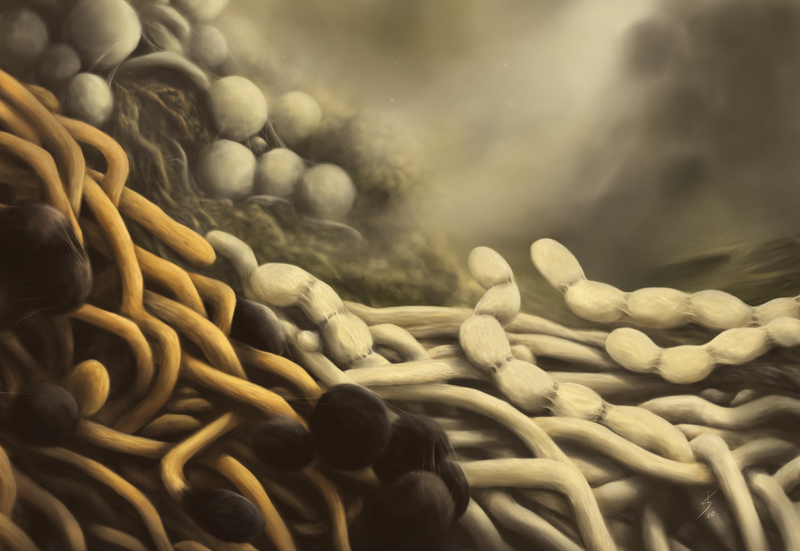
Actinobacteria in hot compost
If you've ever made hot compost, you might have noticed an ashy substance in the pile after it has heated up, and perhaps even worried that the material had started to burn. Chances are it was just actinobacteria, like these colonies of Micromonospora and Streptomyces basking in the heat before the compost cools and fungi take over.
As a compost pile progresses through different stages, the community of microorganisms changes too. Each phase has a unique composition of organisms that specialize in breaking down particular materials. At the early stages, bacteria thrive as they reproduce quickly and break down "green" material that's readily available and easy to digest. All that metabolic activity generates heat, which soon becomes too much for many species and the community shifts toward bacteria and fungi that can tolerate increasing temperatures, while the rest die back. Once the heat loving organisms have consumed all they can, their metabolism slows down and the temperature will start to drop too. Actinobacteria can tolerate higher temperatures than most fungi, so they fill the space just as the pile starts to cool, before fungi take over and become the dominant organisms during the long cooling and maturation stages.
If you like this artwork, you can order a print of it here or support me on Ko-fi. For inquiries about DIY prints, licensing, commissions, collaborations or just to share enthusiasm about microbes, please email post@mikroliv.no, or send a message on Instagram. I love hearing from you!


